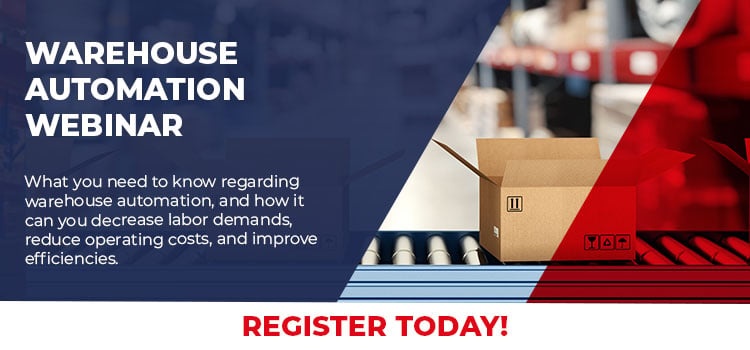Once viewed as a cost center and a necessary evil, warehousing and fulfillment are being seen as a potential competitive advantage. The enhanced overall view of the supply chain is placing increased emphasis on the importance of the warehouse.
A well thought out warehouse automation plan can improve the bottom line of many businesses, but a poorly thought out or implemented project can put the entire business at risk. We see many cases where warehouses are misapplying the available technology to their specific problems or issues.
Consideration has to be given to the reason for considering the technology or automation solution to determine what desired results or objectives are needed. This information will help determine if the proposed solution is appropriate and will deliver the results needed.
A well thought out warehouse automation plan can improve the bottom line of many businesses, but a poorly thought out or implemented project can put the entire business at risk. We see many cases where warehouses are misapplying the available technology to their specific problems or issues.
Consideration has to be given to the reason for considering the technology or automation solution to determine what desired results or objectives are needed. This information will help determine if the proposed solution is appropriate and will deliver the results needed.

Consider technology or automation options when you face issues related to increase volume, accuracy and overall productivity performance. Usually the most labor intensive areas and those processes sensitive to accuracy are the areas to consider for automation.
There are innumerable reasons to consider automation in the warehouse. Among the most frequently heard are:
- Lack of space in the warehouse
- High cost of skilled labor
- Requirement for faster customer service –fulfillment
- Changes to business models or product lines
- Demand for perfect order accuracy
- Competitive pressures
- Desire to lower costs to customers to increase sales
- Shorter lead times
- Reduced damage
- Lower number of lost time accidents
- Reduce or eliminate paperwork
- Increase the speed of information transfers
- Advanced Shipping Notice (ASN)
The assessment of the current or future issue under consideration is the initial driving force behind developing potential automation options for further consideration. Many issues faced by warehouses are common but the solutions can be dramatically different. One size rarely fits all and most likely there are no two warehouses will have exactly the same automation plan. The level and types of automation will vary widely based on your particular business model and operating characteristics and metrics. In most cases, a combination of automation or technology applications should be considered.
Before you consider some type of automated or technology solution to your defined problem, one key piece of information should be researched. The first question that should be asked is whether your current operation is being maximized in the area you seek to improve. If you can’t state that your present conventional operation is being maximized, then it is premature to reach out for a more sophisticated solution.

As you move ahead with the analysis, you will most likely be asked to discuss the Return on Investment (ROI) for your recommendation. Most people today look for a 12 to 18 month payback. If you have not optimized the current operation you run the risk of calculating the ROI on a sub-optimized process that will yield inflated ROI information. You should always attempt to get the most out of what you have before looking for alternate solutions. Even lower volume operations can consider some level of justified automation or technology if the right level is selected.
As we discuss automation and technology solutions, the following examples of potential types of automation options are included in this discussion. As you can imagine, there are many possibilities and this list is presented as an illustration only:
- Basic bar code scanning
- Pick to light
- Put to light
- Voice pick
- Conveyors
- Palletizers
- Robotics
- AS/RS
- Warehouse Management Systems
- Shipping station conveyors
- Package sorters
- Unit sorters
- Carton erectors
- Diverters
- Wire guide equipment
- Carousels
- Man up picking modules
- A-frames
Although automation or technology solutions are justified, and a valuable part of many warehouse operations, some of the following characteristics of automation should be considered in the evaluation:
- Expensive to implement
- Difficult to move or modify – flexibility and scalability issues
- Often takes time to perfect the implementation
- Usually takes whole process down when it fails – critical path issues
- Difficult to have good backup plans
- Initial cost can be daunting
- The impact of automation on peripheral operations has to be considered
This is not to say that automated solutions are a bad thing. You simply need to consider all aspects of this major decision.
As you consider automation solutions, the following simple outline of steps in the process should be considered:
- Establish objectives or goals
- Conduct assessment and develop baseline of measurements
- Define future requirements
- Develop alternatives
- Evaluate alternatives
- Select and implement solution
- Document process and procedures
- Conduct a post implementation audit
Many times a phased in approach to automation installs makes better sense than the “Big Bang” approach. Risk assessment has to be part of the implementation planning.
In conclusion, there are many justified options available for automation or technology applications. Make sure you do your homework and establish the current baseline and future objectives you are trying to attain. Be open to new ideas and make sure your current operation is being optimized. Utilize a systematic process that defines and evaluates options. If you do this, you will increase the likelihood that your recommended solution meets the objectives in a cost justified manner.





SHARE